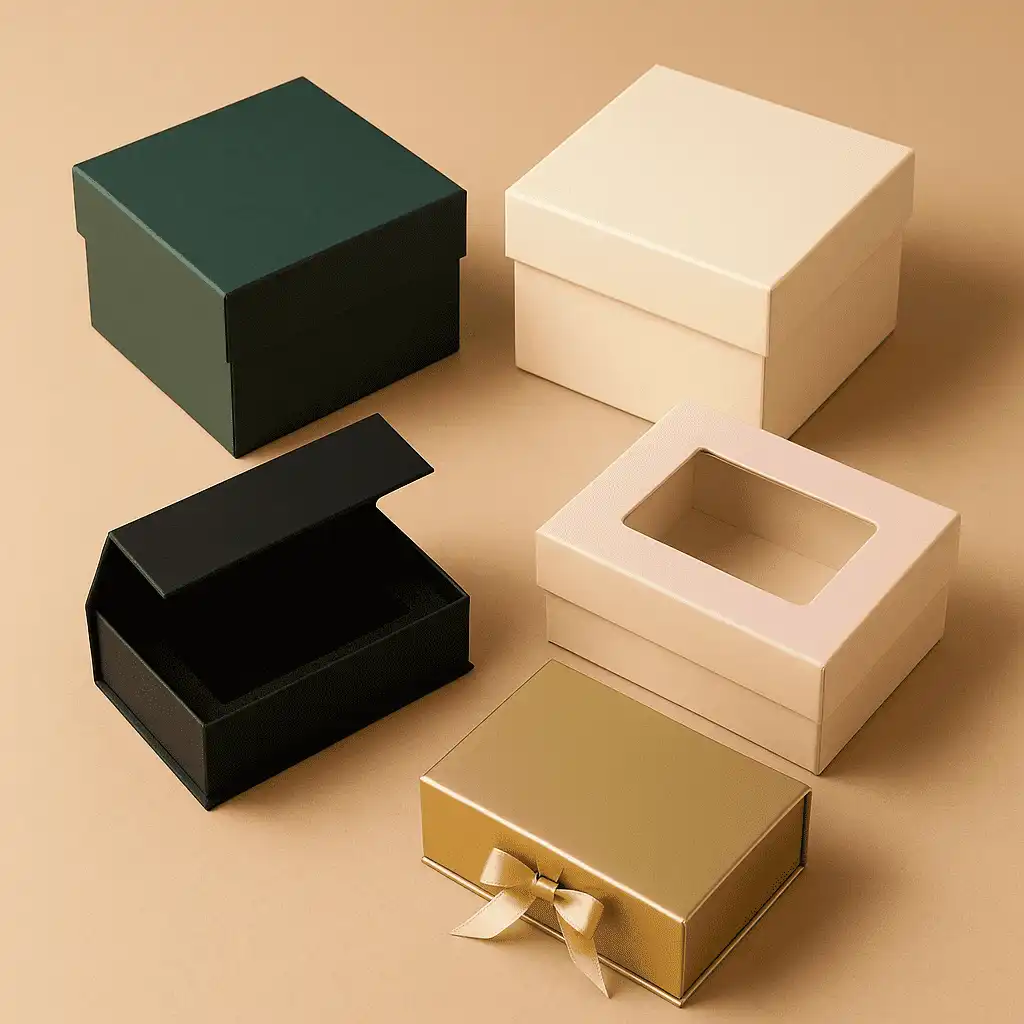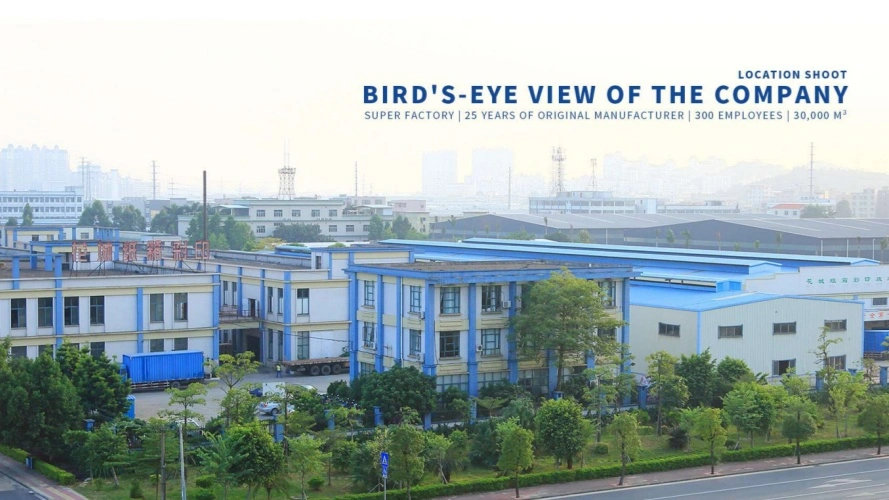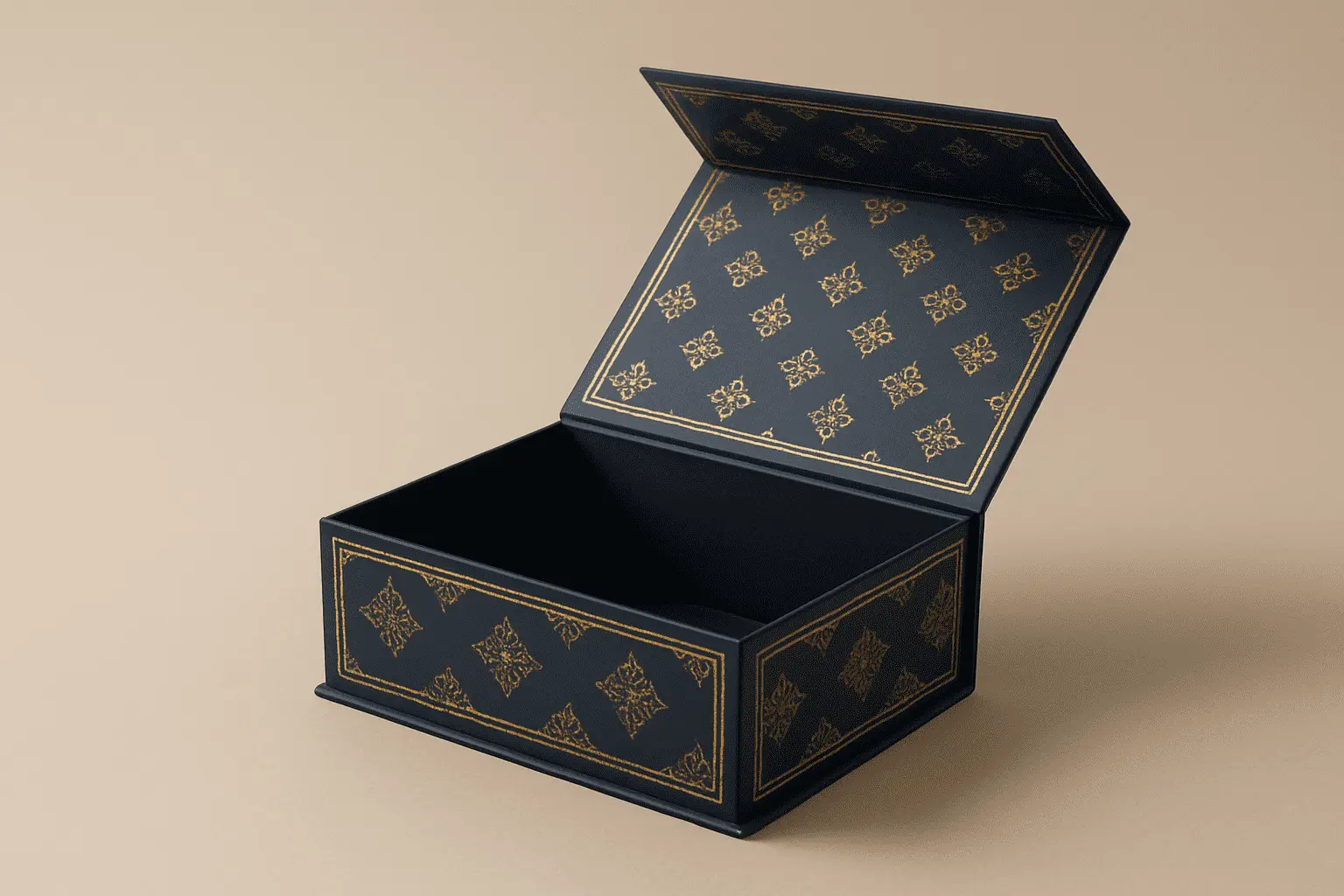Cardboard Gift Box Design Ideas for Premium Product Packaging
Picture this: Your premium product sits on the retail shelf, surrounded by competitors vying for the same customer's attention. The difference between being chosen and being overlooked often comes down to one critical element—your packaging. When brands struggle to communicate their product's value at first glance, they lose sales opportunities before customers even touch the product. This comprehensive guide explores innovative cardboard gift box design ideas that transform ordinary packaging into premium brand experiences, helping you capture attention, build trust, and drive purchase decisions through strategic design choices.

Understanding Premium Cardboard Gift Box Design Principles
Creating exceptional packaging for high-end products requires more than aesthetic appeal—it demands a strategic approach that balances visual impact with functional excellence. Premium cardboard gift box packaging serves as the first physical touchpoint between your brand and customers, making it essential to understand the foundational elements that elevate ordinary boxes into memorable brand experiences. The psychology behind premium packaging reveals that customers associate quality packaging with product quality, with studies indicating that sophisticated packaging designs can increase perceived product value by substantial margins.
When developing premium cardboard gift box concepts, brands must consider multiple dimensions simultaneously. The structural integrity of the box ensures products arrive safely while maintaining their pristine presentation. Material selection plays a crucial role, with options ranging from 250g to 400g paperboard, each offering distinct characteristics suited to different usage scenarios. Surface treatments such as cold foil stamping, hot foil stamping, UV coating, frosted touch finishes, and embossing techniques dramatically enhance visual appeal and tactile experience. These elements work in concert to create packaging that not only protects but also elevates the unboxing experience into a memorable brand moment.
Material Selection for Luxury Cardboard Gift Boxes
The foundation of any premium cardboard gift box lies in material selection, where the choice between different paperboard grades directly impacts both functionality and perceived value. SBS C1S (Solid Bleached Sulfate – Coated One Side) represents a premium-grade paperboard manufactured from completely virgin bleached wood pulp, offering an exceptionally smooth white printing surface on one side while maintaining an uncoated reverse for superior glue adhesion. This material excels in applications requiring vibrant color reproduction and fine detail, making it the preferred choice for cosmetics, personal care, and high-end retail packaging where brand presentation is paramount.
SBS C2S (Solid Bleached Sulfate, Coated Two Sides) takes premium packaging to the next level with coating on both surfaces, enabling excellent double-sided print quality with vibrant color reproduction and intricate detail rendering. Produced entirely from bleached chemical pulp, this material maintains exceptional whiteness, brightness, and purity—critical factors for sensitive applications like food contact or pharmaceutical packaging. The superior stiffness and structural integrity of SBS C2S ensure the cardboard gift box maintains its shape throughout handling and conversion processes. Its compatibility with various finishing techniques including lamination, UV coating, foil stamping, embossing, and die cutting makes it ideal for creating highly customized, luxury packaging designs that command premium shelf presence.
Brown Kraft paper offers an entirely different aesthetic proposition, manufactured from unbleached wood pulp that retains its natural brown hue and visible fiber texture. This material brings authenticity and environmental consciousness to premium packaging strategies, particularly for brands emphasizing organic, handcrafted, or vintage-style positioning. The high tensile strength, tear resistance, and abrasion resistance of Kraft paper ensure durability while the slightly coarse surface texture provides an authentic, rustic hand-feel that resonates with consumers seeking sustainable alternatives. When treated appropriately, Kraft paper demonstrates good moisture resistance, making it suitable for various product categories. Its recyclable and biodegradable nature aligns perfectly with modern sustainable packaging requirements while maintaining cost-effectiveness for high-volume production runs.
Creative Design Approaches for Premium Cardboard Gift Boxes
Innovation in cardboard gift box design extends far beyond selecting premium materials—it encompasses structural creativity, visual storytelling, and sensory engagement that transform packaging into powerful marketing tools. Contemporary premium packaging strategies embrace both minimalist elegance and maximalist vibrancy, depending on brand positioning and target audience preferences. Minimalist designs celebrate simplicity, clarity, and elegance, allowing products to shine through understated sophistication. This approach communicates premium quality through refined color palettes, clean typography, and strategic negative space that conveys confidence and timeless appeal.
Conversely, maximalist cardboard gift box designs make bold statements through vibrant colors, intricate patterns, and layered visual elements that demand attention in crowded retail environments. This approach suits brands targeting younger demographics or products positioned as experiential purchases rather than functional necessities. The key to successful maximalist design lies in maintaining coherence despite visual complexity—every element must contribute to the overall brand narrative rather than creating visual noise. Pattern repetition offers another powerful design strategy, where custom patterns created from brand logos or proprietary imagery are printed across the cardboard gift box surface, creating distinctive brand recognition and visual interest that elevates perceived value.
Structural Innovation and Box Style Selection
The physical structure of premium cardboard gift boxes significantly influences both functionality and customer experience, with various structural designs offering distinct advantages for different product categories and presentation goals. Rigid boxes with sleeve and tray configurations represent the pinnacle of luxury packaging, commonly employed for expensive products such as watches, jewelry, and high-end electronics. The sleeve slides smoothly over the tray, creating anticipation and adding theatrical elements to the unboxing experience. When combined with matte finishes that allow brand logos to shine through without distraction, these cardboard gift boxes deliver exclusivity with every purchase while maintaining the structural strength necessary to protect valuable contents.
Magnetic closure folding gift boxes provide another sophisticated option, incorporating embedded magnets within the box structure to ensure secure closure without visible fasteners or adhesive tabs. This design approach delivers clean aesthetics and premium feel while simplifying the opening and closing process—an important consideration for reusable luxury packaging. The satisfying "click" of magnetic closure subconsciously reinforces quality perception and encourages customers to retain and reuse the cardboard gift box long after the initial purchase, extending brand exposure and creating lasting impressions. Cubic boxes with equal dimensions on all sides offer practical advantages for specific product categories like bakery items, confections, or cosmetic gift sets. Adding ribbon handles to cubic cardboard gift boxes enhances both visual appeal and functionality, ensuring comfortable carrying while maintaining balanced weight distribution that prevents handle stress or box deformation.
Advanced Printing and Finishing Techniques
The transformation of premium cardboard gift boxes from functional containers to brand ambassadors depends heavily on printing and finishing techniques that deliver visual impact and tactile satisfaction. CMYK printing (Cyan, Magenta, Yellow, Black) forms the foundation of most commercial printing applications, utilizing a subtractive-color process that overlays four ink plates to reproduce nearly the full spectrum of visible colors. This cost-efficient and technically mature process accurately reproduces photo-quality images, smooth color gradients, and complex graphics universally supported by commercial printing presses. The versatility of CMYK printing makes it ideal for full-color applications including brochures, posters, and folding cartons, offering fast turnaround times and efficiency for large-volume production runs.
Pantone printing elevates color consistency through the Pantone Matching System (PMS), an internationally standardized system utilizing premixed proprietary inks identified by unique codes for precise color matching. Unlike CMYK printing which creates colors through overlapping transparent inks, Pantone delivers solid, dot-free color in a single pass, ensuring standardized ink formulas produce exact, repeatable colors across multiple production runs regardless of location or equipment variations. This capability proves essential for brands requiring absolute color fidelity in logos and corporate identity elements, where even slight color variations can undermine brand recognition and trust. The Pantone library includes thousands of hues including specialty metallics and fluorescents impossible to achieve through standard CMYK processes, enabling unique visual effects that differentiate premium cardboard gift boxes from competitors.
Surface Enhancement and Protective Coatings
Beyond printing, surface finishing techniques dramatically enhance both aesthetics and durability of premium cardboard gift boxes, transforming printed surfaces into multi-sensory brand experiences. UV coating applies liquid coating to printed surfaces then cures it instantly using ultraviolet light, creating extremely hard, glossy finishes that protect against scratches, scuffs, and moisture while intensifying color vibrancy and visual impact. Spot UV application—where UV coating is selectively applied to specific design elements—creates striking contrast between glossy highlighted areas and matte uncoated regions, adding depth and sophistication to relatively simple designs without requiring expensive die-cutting or embossing equipment.
Lamination bonding printed sheets to sturdier substrates or applying clear protective films dramatically improves durability and perceived quality of cardboard gift boxes. Matte lamination delivers sophisticated, understated elegance perfect for luxury brands emphasizing refinement over flash, while gloss lamination maximizes color saturation and visual pop ideal for vibrant, attention-grabbing packaging designs. Soft-touch lamination creates velvety tactile surfaces that invite handling and communicate premium quality through sensory engagement beyond visual appeal—a particularly effective technique for cosmetics and personal care packaging where touching the package forms part of the purchase consideration process.
Foil stamping applies metallic or pigmented foil to cardboard gift box surfaces through heat and pressure, creating eye-catching metallic effects impossible to achieve through conventional printing. Cold foil stamping and hot foil stamping offer different advantages—cold foil works with standard printing presses for cost-effective metallic accents, while hot foil stamping delivers superior brightness and detail for premium applications where visual impact justifies additional investment. Embossing creates raised designs by pressing cardboard between male and female dies, adding three-dimensional texture that enhances tactile experience and perceived value. When combined with foil stamping, embossing creates stunning visual and tactile effects that position cardboard gift boxes firmly in the luxury category regardless of the actual product cost.
Strategic Production Process for Premium Packaging
Creating exceptional cardboard gift boxes requires systematic production processes that maintain quality standards throughout every stage from initial design consultation through final delivery. The ordering process begins with demand consultation where customers communicate their specific packaging requirements, product characteristics, target market positioning, and desired aesthetic direction. This foundational conversation establishes expectations and ensures alignment between customer vision and production capabilities, preventing costly miscommunications or revisions later in the development cycle.
Solution design follows initial consultation, where business managers conduct detailed content docking with customers to refine specifications, propose material options, recommend structural configurations, and suggest finishing techniques that align with both budget constraints and quality objectives. During this phase, packaging engineers leverage extensive professional experience to offer guidance on new material applications, packaging structure development, artwork design optimization, and process technology selection that maximizes visual impact while maintaining production efficiency and cost-effectiveness. This collaborative approach ensures the final cardboard gift box design balances aesthetic aspirations with practical manufacturing considerations.
Sample Development and Production Implementation
Professional implementation translates approved designs into physical samples that allow customers to evaluate appearance, structural integrity, and overall quality before committing to full production runs. Sample development represents a critical checkpoint where theoretical designs become tangible products, revealing potential issues with color matching, structural stability, finishing quality, or assembly complexity that may not be apparent in digital mockups or technical drawings. Customer confirmation of samples validates that the proposed cardboard gift box design meets all requirements and expectations, providing confidence to proceed with full-scale production.
Once customers approve samples and confirm order details, deposit payment initiates the production process where approved designs enter manufacturing workflows encompassing printing, surface finishing, lamination, die-cutting, gluing, assembly, and quality control checkpoints. Advanced equipment including KBA106-(9+1) UV printing machines and Heidelberg XL162-6L printing machines handle large-format printing within 1.62-meter widths, solving challenges associated with oversized packaging while improving overall printing efficiency. Fifteen fully automatic die-cut machines of various sizes ensure rapid, precise cutting operations that maintain dimensional accuracy critical for proper box assembly and premium appearance. A dedicated manual department staffed with skilled workers handles complex handmade gift box assembly that automated systems cannot efficiently process, preventing homogenization of brand packaging and enabling truly distinctive luxury presentations.
The production workflow progresses systematically through each transformation stage. Printing transfers designs onto paper or board using offset, digital, or flexo presses selected based on run length, complexity, and substrate characteristics. Surface finishing enhances and protects printed surfaces by applying coatings or varnishes such as UV, matte, or gloss finishes that improve durability while enhancing visual appeal. Lamination or mounting bonds printed sheets to sturdier substrates or applies clear protective films for additional durability and premium feel. Die-cutting employs custom metal dies to cut precise shapes, create windows for product visibility, or trim edges to exact specifications. Gluing and assembly operations fold and bond die-cut pieces together, forming complete boxes, folders, or other finished packaging items. Finally, packing and shipping operations stack, bundle, or carton completed products before palletizing and dispatching them to customers through efficient logistics networks.
Sustainability and Certification Standards
Modern premium packaging strategies must balance aesthetic excellence with environmental responsibility, addressing growing consumer preference for sustainable packaging solutions without compromising quality or brand presentation. FSC (Forest Stewardship Council) certification verifies that paperboard materials originate from responsibly managed forests that provide environmental, social, and economic benefits. This certification assures customers that their cardboard gift box purchases support sustainable forestry practices rather than contributing to deforestation or habitat destruction—a consideration increasingly important to environmentally conscious consumers across all demographic segments.
Environmental management systems certification including ISO14001-2015 demonstrates organizational commitment to reducing environmental impact through systematic identification, control, and reduction of pollution sources and waste generation throughout manufacturing operations. Quality management systems certification such as ISO9001-2015 ensures consistent processes, continuous improvement methodologies, and customer satisfaction focus that deliver reliable product quality across all production runs. These certifications provide third-party validation that manufacturing operations meet internationally recognized standards for both environmental stewardship and quality management, building customer trust and differentiating certified manufacturers from competitors lacking such credentials.
Recyclability represents another critical sustainability dimension for premium cardboard gift boxes, with properly designed packaging capable of entering municipal recycling streams without contamination issues that compromise recycling efficiency. To maintain recyclability, all components including inks, adhesives, coatings, and lamination materials must be compatible with recycling processes. Vegetable-based inks, eco-friendly adhesives, and plant-based lamination materials ensure that cardboard gift boxes remain environmentally friendly throughout their lifecycle while maintaining the visual quality and physical performance required for premium packaging applications. This holistic approach to sustainability addresses environmental concerns without forcing brands to compromise on the packaging quality essential for premium product positioning.
Conclusion
Premium cardboard gift box design represents a strategic investment in brand differentiation, customer experience, and sales performance. By combining innovative structural design, advanced printing techniques, premium materials, and sophisticated finishing processes, brands create packaging that commands attention, communicates quality, and justifies premium pricing while meeting modern sustainability expectations.
Cooperate with GUANGZHOU FETCHING COLOR PRINTING & PACKAGING LTD.
As a leading China cardboard gift box factory, China cardboard gift box supplier, and China cardboard gift box manufacturer with over 20 years of experience, Guangzhou Fetching Color Printing & Packaging Ltd. delivers exceptional cardboard gift box wholesale solutions and High Quality cardboard gift box for sale at competitive cardboard gift box price. Our 50,000㎡ facility houses industry-leading equipment including German Heidelberg printing machines, 15 automatic die-cut machines, and 100 skilled manual workers who craft extraordinary custom packaging for over 1,000 loyal customers across cosmetics, electronics, food, and personal care industries. Certified by ISO9001-2015, ISO14001-2015, FSC, Disney, Smeta, and G7 Color Management, we provide comprehensive packaging solutions from structural development through production and delivery. Contact us today at public@fetchingprinting.com to transform your product presentation and elevate your brand with premium cardboard gift box packaging. Save this guide for future reference as you develop your packaging strategy.
References
1. "Packaging Design: Successful Product Branding from Concept to Shelf" by Marianne R. Klimchuk and Sandra A. Krasovec. John Wiley & Sons, 2012.
2. "The Psychology of Packaging" by Nicklas Pyrdol. Nordic Academic Press, 2019.
3. "Sustainable Packaging: Consumer View, Innovation, and Design" by Karli Verghese, Helen Lewis, and Leanne Fitzpatrick. Springer, 2015.
4. "Luxury Packaging Design: Strategy, Methodology, and Application" by Jean-Philippe Michel. Routledge, 2018.

Based on your location and order quantity, you will have the opportunity to receive a limited time free shipping promotion!

Corporate Purpose
